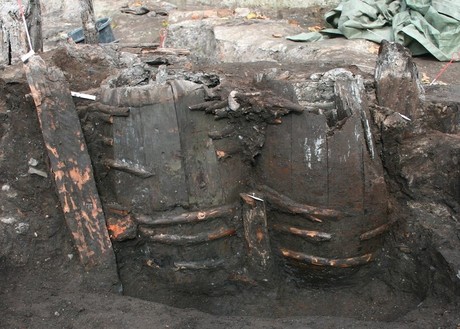Ancient poo reveals the parasites that plagued our ancestors

Analysing 1000-year-old poo might not sound like the most glamorous job in existence, but for scientists led by the University of Copenhagen, it’s led to new breakthroughs in our understanding of the ancient world.
Parasitic worms that infect the human intestine lay eggs that are later excreted in faeces. These parasites might spread from human to human, or they may be passed from intermediate animal hosts, such as pigs or fish, via meat consumption or contaminated soil.
Previous studies have investigated past diets by using microscopy to identify parasite eggs in ancient waste, but the advancement of DNA sequencing technology has opened up new opportunities in this field. In the new study, published in the journal PLOS ONE, Martin Søe and colleagues used a novel approach to examine DNA in parasite eggs from ancient latrines in Bahrain, Jordan, Denmark, the Netherlands and Lithuania.
The researchers first filtered and concentrated the parasite eggs in their samples, which spanned a period from 500 BC (Bahrain) to 1700 AD (the Netherlands). This initial step ensured they would have sufficient amounts of DNA for a technique known as shotgun sequencing. The resulting DNA sequences reflected which parasite species were represented by the eggs.
Most of the egg DNA came from parasites known to spread from human to human, but much came from parasites that are transmitted via raw or undercooked fish and pork. The egg DNA also revealed which animals — domesticated or not — may have lived among humans, such as sheep, horses, dogs, pigs and rats.
To complement the egg analysis, the researchers also examined animal and plant DNA in the samples. Animal DNA reflected domestication as well as hunting and fishing practices; some of the Danish samples (1018 to 1400 AD) contained DNA from fin whales, roe deer and hares. Plant DNA reflected different areas’ diets, including an abundance of cabbages and buckwheat in Northern Europe.
The shotgun sequencing results also enabled the research team to fully reconstruct several ancient parasites’ mitochondrial genomes — DNA in energy-producing structures known as mitochondria, which are found in many organisms’ cells. Mitochondrial DNA can reveal evolutionary relationships, and the researchers anticipate that, in future studies, this novel strategy could yield further insights into ancient parasites and their spread among hosts.
“Ancient DNA from latrines was used to identify the remains of a broad range of human and animal parasites as well as animals and plants,” said Søe. “This allows novel and unique insights into parasitism, diet and subsistence patterns of past populations.”
Anti-inflammatory drug may help treat alcohol use disorder
A drug that is already FDA-approved for treating inflammatory conditions may help reduce both...
Osteoarthritis study uncovers new genetic links, drug targets
The genome-wide association study (GWAS) uncovered over 900 genetic associations, more than 500...
How brain cells are affected by Tourette syndrome
US researchers have conducted a cell-by-cell analysis of brain tissue from individuals with...





